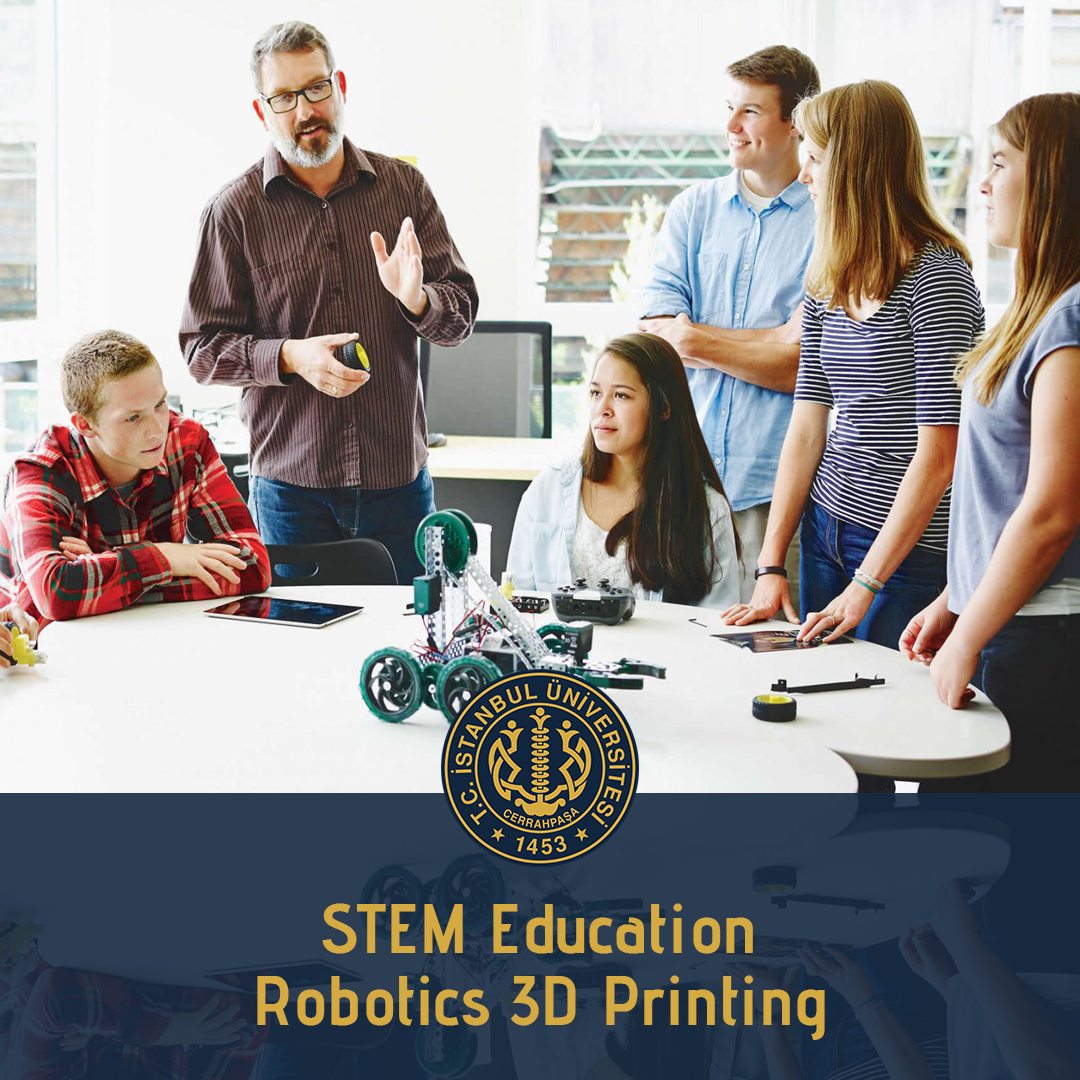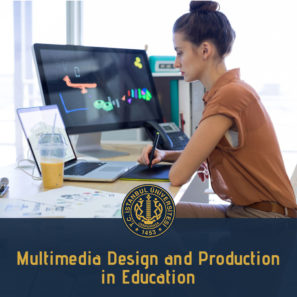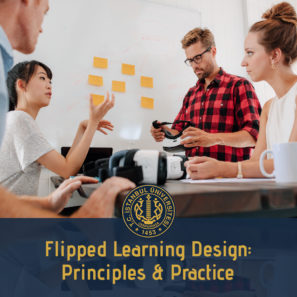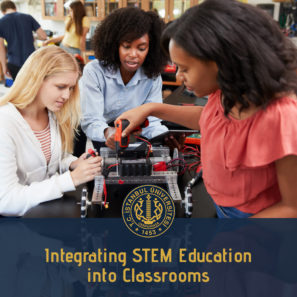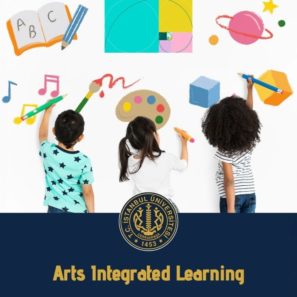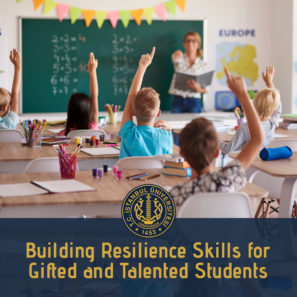Preparatıon:
This training provides the participants with the opportunity to learn how to design, implement, and evaluate STEM education in the classrooms, and basic knowledge and skills needed to integrate coding, robotics, and 3D printing into STEM education in a successful manner. Participants will engage in authentic content and hands-on STEM activities in which they will use technological tools, equipment, and procedures in innovative ways to solve design challenges by working as a team and individually throughout the sessions. Besides, productive discussion and exchange of experiences and new ideas in STEM education enriched with robotics and 3D printing will be among the requirements of the training. Participants will also be sent the materials such as articles, documents, and videos related to the content before attending the training.
Course descrıptıon
Countries have been in global competition to constantly produce newer and better services and products, especially in fastest-growing STEM (Science, Technology, Engineering, Mathematics) fields which are closely linked with our health, safety, economic well-being, and quality of life. To meet and sustain the workforce demand in these fields, they have begun to adopt STEM practices, curriculum, and policies that expand STEM opportunities for all students (STEM Task Force 2014). STEM education is an educational approach that integrates science, technology, engineering, and mathematics into real-world content. The main goals of STEM education include STEM literacy, 21st century skills (e.g., critical thinking, problem solving, communication, cooperation, creativity and innovation, etc.), preparing the STEM workforce, creating interest in STEM disciplines, and developing skills to establish connections between STEM disciplines (Katehi et al. 2009). STEM education has a strategic importance in terms of countries’ economic strength in the global economy. Therefore, creating and developing interest in STEM disciplines play active role in encouraging students to enter the workforce in these areas in the future (Knezek et al. 2013). Enriching STEM education with robotics and 3D printing also promotes this interest and makes learning experiences more enjoyable for students due to the fun and exciting nature of robotics and 3D printing. In general, STEM education supports individuals to develop the STEM skills they need to be successful in their education, profession, and daily life. With the integration of STEM education into curriculum all around the world, the need for STEM educators with the competence to effectively design, implement and evaluate STEM education has emerged and rapidly increased in recent years. In this context, the training enables participants to learn, experience, and practice STEM approach with a practical focus on the potential benefits of the approach through discussing challenges and sharing good practices with fellow teachers and education staff from across Europe. The training covers hands-on STEM activities, stimulating materials, tools, and ideas to inspire and support participants in their STEM lesson planning in the collaborative and interactive sessions.
Methodology
The training includes ice-breaking activities, team-work, group debates, hands-on STEM activities, and collaborative lesson planning etc. The methodological approach of the training comprises a wide-range of learning approaches and methods such as project-based learning, problem-based learning, inquiry-based learning, experiential learning, brainstorming, group and peer debates. Scientific inquiry and the engineering design process will also be used to foster the participants’ STEM knowledge and skills throughout the hands-on STEM activities.
Learnıng Outcomes
This training aims to inspire and equip the participants with the necessary knowledge and skills to design, implement, and evaluate effective STEM practices, basic understanding on coding- robotics-3D printing, innovative STEM learning tools, and tips to integrate STEM education with robotics and 3D printing into the classrooms. Participants will also be provided insight into how to make STEM education more beneficial to support students’ motivation, engagement, and learning in STEM fields. Upon successful completion of the training, the participants will be able to:
- Develop basic understanding on STEM education, including its importance and potential benefits
- Explain the main components of successful STEM practices
- Discover how to design, implement, and evaluate STEM practices addressing different levels of learners
- Explore innovative ways to integrate STEM practices into their own teaching
- Get acquainted with 3D design and 3D printing to integrate into STEM education
- Make simple projects with Arduino set
- Employ coding and robotics at the basic level in STEM education
- Exchange good practices and discuss challenges with fellow colleagues and the trainers
Follow-up
The participants will be required to develop and share their STEM lesson plans, to be followed by a structured feedback session. Additionally, given a chance to network with individuals and organizations working in the education field in Europe through everyday cooperation and team-building activities, the participants might further their practice on STEM education by extended experience sharing sessions.
Specıfıcs
This standard indicative daily programme might be personalized on participants’ needs and professional profiles. Networking, preparation and team build up activities to be located on the first day; and follow up, specific needs and cultural activities on the last day.
Course Venue
Istanbul University – Cerrahpaşa Continuing Education Center
Course Date
| Date | Course Times | Course Content |
| Day1 | Theoretical Framework of STEM Education
Hands-on STEM Activities
|
|
| Day2 | Creating STEM Lesson Plans
Presentation and Evaluation of STEM Lesson Plans
Suggestions for Integrating STEM into your practice
|
|
| Day3 | Introduction to Coding and Robotics
Block Based Coding with Snap4Arduino
|
|
| Day4 | Introduction To Basic Electronics
Practices on Arduino using Snap4Arduino
|
|
| Day5 | 3D Design and 3D Printers
|
|
| Day6 | Integrating Robotics into STEM Education
General Evaluation and Closure
|
INSTRUCTORS
Program Coordinator
Instructors
The number of partIcIpants
5 – 15 participants
CertIfIcate
Digital certificate.
Type of EducatIon - Place
Face to Face or Distance Education
PAYMENT
You can choose one of the following payment methods EFT and Credit Card.
BANK ACCOUNT INFORMATION
Euro Account
Banka Adı (Bank Name): TC Halk Bankası
Şube Adı (Branch Name): Cerrahpaşa
Hesap No (Account ): 0058 1000 60
SWIFT: TRHBTR2A
Explanation: İstanbul Üniversitesi Cerrahpaşa Sürekli Eğitim MerkeziEUR İBAN: TR51 0001 2001 5300 0058 1000 60
İlgili ürünler
Erasmus+ KA1 Courses
Erasmus+ KA1 Courses
Erasmus+ KA1 Courses
Erasmus+ KA1 Courses
Erasmus+ KA1 Courses
Erasmus+ KA1 Courses
Erasmus+ KA1 Courses
Erasmus+ KA1 Courses
Multilingual & Multicultural Learning in English Language Education

